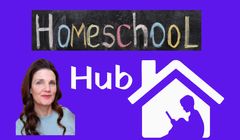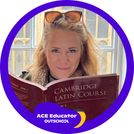How figuring out my child’s learning preferences made me a better homeschool parent
Why your children's learning preferences are so important, especially for homeschooling. And how I use my child’s preferences to enhance learning
Your children have superpowers. No, not the imaginary ones of flying or becoming invisible. Their superpowers include unique ways of thinking, doing, moving, creating, and more.
And these powers contribute to learning preferences or the preferred way(s) a child digests new information. We wrote a complete guide here, but for reference, the four common learning preferences are visual, aural, reading and writing, and kinesthetic.
The number one way to empower yourself and your children throughout your homeschooling journey is to:
Figure out the child’s learning preferences
Tailor their education to them to enhance learning
Sounds simple enough, right? Well, I’ve gone through the research (and mistakes), so you can hopefully learn from mine and create a homeschool environment that supports your child’s learning in the best possible way.
In this article, we’ll discuss deschooling, learning preferences and why they’re important, and how I use my child’s learning preferences to enhance learning.
But first, let’s work on deschooling ourselves
In preparation for homeschooling, I knew it was necessary to deschool ourselves first. My husband and I grew up in the conventional school system, so we were very much used to the traditional ways of teaching, testing, grading, etc.
We are the first family on both sides to choose home education, and we confidently take this journey because of our awareness of school systems not successfully meeting every child’s unique needs. Not because teachers aren’t trying their best, but because the system as a whole is flawed.
One of my favorite quotes by Peter Gray, writer, homeschooler, and author of Free to Learn touches on this:
We have forgotten that children are designed by nature to learn through self-directed play and exploration, and so, more and more, we deprive them of the freedom to learn, subjecting them instead to the tedious and painfully slow learning methods devised by those who run the schools.
Whether your child attended traditional school and now you’re homeschooling, or you’ve been homeschooling from birth, deschooling is always a necessary step to have a fresh educational start.
Rather than recreating traditional school at home, deschooling allows parents to become more aware of a child’s learning preferences, and activities they enjoy doing, to see free play as a necessity, and make family time a priority.
Top things to keep in mind about deschooling:
The process takes time. Some homeschoolers take months or even years to fully deschool themselves, so give yourself plenty of grace.
Don’t get caught up in comparing your family to someone else's, because you and only you know your child best.
Family members’ opinions about your homeschooling or questions about your child’s education should be taken with a grain of salt. Again, you know your child best and if your trust is all that matters.
Helpful resources that helped my husband and I deschool included reading books authored by fellow homeschoolers and child advocates, listening to homeschool podcasts, reading blog articles, and trusting our instincts.
My straight-A conventional schooling was the opposite of my husband’s life-long struggle with conventional schooling. We discuss our educational journeys in-depth on a regular basis, and further root ourselves in the homeschool journey because of these conversations and discoveries.
More about learning preferences and why they’re so important
In the beginning, homeschooling can feel overwhelming, because as parents we complete all the research on the best curriculums, homeschool spaces, enrichment programs, etc. We may have a vision of how our homeschooling days are going to go, and the reality is it may go the exact opposite.
Figuring out your child’s learning preference(s) breaks the stigma of thinking all children learn a certain subject, a certain way, and at a certain time. In reality, learning is most successful when the child is ready for the content, shows interest in the content, and their learning preferences are met.
An example that comes to mind is reading skills.
Traditional schools want all kids reading independently by the ages of 6 and 7 because then the teacher has more time for lessons and it’s simply easier to get the most out of a packed school day. However, the average reading age is 7 years old. This means it’s completely okay for some kids to read at 5 and for some kids to read at 10.
But traditional schools ignore this fact. Children are often expected to learn how to read in a way that’s not aligned with learning preferences and well before many of them are ready. This has long-lasting effects on a person’s love of learning, self-confidence, feelings about school, and more.
How to decode learning preferences?
You know your child more than anyone else, so you’re completely capable of decoding your child’s learning preferences. The number one way is through pure observation. Thanks to homeschooling, you have plenty of time to do this.
The 4 main learning preferences include:
Visual: A person who needs to see or read information to learn.
Auditory: A person who needs to hear conversations to learn.
Reading and writing: A person who needs to read and write to learn.
Kinesthetic: A person who needs to move and be hands-on to learn.
Oftentimes, people have more than one learning preference. Once you’ve discovered your child’s, then you can create lessons and activities tailored to them.
For example, if you have a kinesthetic learner that craves movement, it may be helpful to eliminate items that act as barriers to movement:
Remove the chairs from around a table in order to provide more ease of movement.
Release your possible expectations of the child sitting down quietly during a read-aloud of a chapter.
Provide items your child can manipulate with their hands, such as magnet tiles or a fidget spinner.
Keep in mind that no matter what learning preferences a child has, their attention span is about 5 minutes plus their age. Especially for less open-ended activities that follow steps like science experiments.
So, If a child is 10, then you can expect them to have a full attention span of about 15 minutes per lesson. Open-ended lessons such as art activities are usually more engaging to the learner and will keep their attention for greater amounts of time.
The turning point in our homeschool journey
We’re still a young homeschool family, and we continue to learn daily from our experiences together. Since my daughter is only 7 and is technically at the first-grade level, we’ve taken advantage of a lot of free play, child-led activities, and child-led learning.
At the beginning of our journey, I had high hopes when I purchased a complete Kindergarten curriculum. I imagined us doing these cute activities together every day, step by step from the different chapters. I quickly learned that sitting at a desk for 2-3 hours a day and learning from workbooks was not my kid’s cup of tea.
I completed some research and discovered our daughter is both a kinesthetic and auditory learner. This means she enjoys learning through hands-on activities and movement (or watching others move), as well as listening and talking.
An example of my daughter’s two learning preferences intertwined
We began reading to our daughter when she was a baby, and since the age of 2, she’s been interested in people reading aloud to her. One of our daily rhythms includes me reading from a book while she eats her breakfast, and often another time during the afternoon, and every night at bedtime.
Since she needs a lot of gross motor movement, I’ve never forced her to sit or keep quiet during read-aloud time.
She often plays around the room with items like magnet tiles or wooden people, creates art, and she sometimes talks quietly to herself. To the untrained eye, a person could deduce she’s not paying attention to the story at all. They’d be wrong.
Many times, I’ve lost my spot in the book and she’ll tell me the last couple words I read so I can find my place. She’s clearly following along with the characters and storyline, and during mysteries, she’s thinking of possible antagonists in the story.
As a mom and educator, I’m so glad I can provide daily spaces for the movement and regular conversations her body and mind need. When I’m preparing activities or lessons, I always have her learning preferences in the back of my mind, as well as when we’re not “doing” school.
Support your child’s education with Outschool classes
As homeschooling parents, whether we were traditionally schooled or homeschooled in a different way than we are now, it all begins with empowering the learner and ultimately giving power to ourselves as guides in the learning process.
I see this advice frequently around homeschool circles: the number one thing you can do is trust your child. Trust they’ll learn things when they’re ready, instead of being worried about falling behind or comparing your children to traditionally-schooled children.
I admit this is no easy feat. There will be ups and downs throughout everyone’s homeschooling journey. But, the great thing about homeschooling is you don’t have to do it all on your own!
You can use tutors, online classes, and subject matter experts in your community to give your children all of the learning opportunities. With Outschool’s array of virtual classes, you’ll be sure to find ones to support your family's various learning preferences.

Topics Related to Homeschool
Similar Homeschool articles
Homeschool classes


1-on-1 Tutoring


1-on-1 Tutoring





